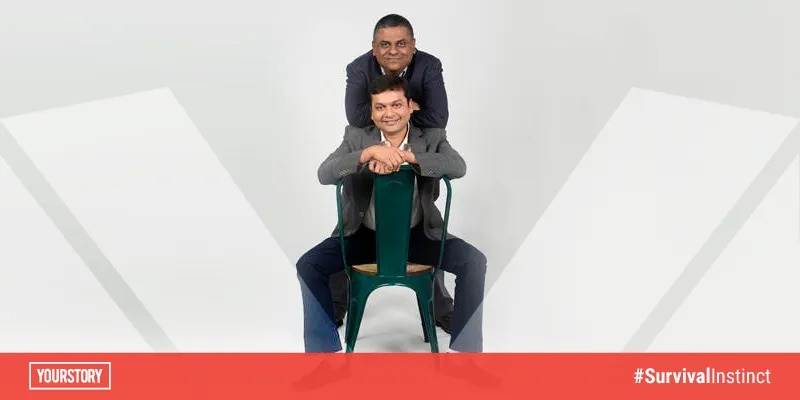A broken wall, an empty bank account, and a crashed website: the extraordinary story of Pepperfry
A business plan, funding taking time, an unimagined response from customers, and a pivot – these define the eight-year journey of Pepperfry. As does the team’s annual August holiday in Goa.

Not many may know this – but Pepperfry, the leader in the online furniture sector, started out as a horizontal online marketplace focusing on fashion and lifestyle. This was the time when Amazon was not present in India, and Flipkart was yet to make waves.
With a decade’s experience at eBay India as country manager for India, the Philippines, and Malaysia, Ambareesh Murty and Ashish Shah, who was heading sales and operations, decided to start up in early 2011. In fact, they even changed their LinkedIn profiles to read “starting up” in June 2011.

Thanks to the personal equity they had built, it got a lot of people, including some former colleagues in marketing, tech, finance, and admin, reaching out to work with them. Within a week of starting up, they had a team of six, including senior professionals and one in Jodhpur to set up operations!
What’s more, Ashish and Ambareesh also had a verbal commitment of a $5 million investment from some VCs. However, they were soon to realise that term sheets mean nothing without capital.
“By August the same year, we were already a team of 25, without even a brand name!” says Ashish. They also had no money from investors yet since VC processes take time. At that point in time, Ashish and Ambareesh only had term sheets, and their life-savings already invested into their venture.
That was when the entrepreneur-duo did something that nobody would have even thought of: they took the entire team on a holiday to Goa.
“We had hardly around Rs 10 lakh left after giving salaries for June-August. So, we took all 25 on this trip. Even if we were losing money, we did not want to compromise on that last opportunity for having fun. What else can you do anyway?” Ashish reminisces with a smile.
Lady luck shines through
As luck would have it, within a few weeks, things worked out and Pepperfry raised $5 million in Series A. Motivated and energised, the team got back to work, and initially focussed on building the supply; so, a team was first built for sourcing and category management. Marketing came only six months later as it is relevant only after your shop is full of merchandise.

After building the backend processes for a year, in August 2012, Pepperfry was finally launched to the customer. Ashish remembers the surprise they got on day one.
“Thanks to affiliate-based promotions, we got 1,400 orders in a few hours itself. We were not expecting this at all; our plan was to get 40-50 orders per day in six months! But on the day of the launch, by late night, our website crashed due to the high traffic! The entire Pepperfry team had to call all the customers and assure them that we have got their payment and that their orders will be shipped. Our aspirations changed in one day!”
The Pepperfry office
For the first year, the team operated out of a business centre at the Renaissance hotel in Powai, which cost Rs 4,500 per day. (Co-working spaces were not very common then.)
“Every interview we did (for hiring) was in a cafeteria or the hotel lounge. Inviting people to a large hotel gave us the image of a large company,” laughs Ambareesh.
Pepperfry’s first formal office was a 25-seater one in Kohinoor Commercial Complex in 2012. “Most people were sceptical of startups at the time and were not ready to take a risk even though we had promised the deposit early on. But we were growing fast, and within five months, we were able to (and needed to) rent out the space next to it as well. In fact, we broke the wall (separating the two) and left it unfinished to give the look of a graphic painting,” Ashish recollects. Pepperfry still owns this space.
Starting again
In early 2013, Ashish and Ambareesh pivoted to furniture and home furnishing as the horizontal experiment was not making a profit. The furniture category, on the other hand, was sure to make a profit at some point – it offers about 45 percent margin and customer discounts are not very significant.
“It was a huge call as entrepreneurs,” Ambareesh confesses. To pivot, Pepperfry gave up 35 percent of its business in one day. “We spoke to sellers and gave them whatever money we owed them. We emailed customers too about the transformation. Targets changed, growth rate changed; but our investors supported the decision and customers responded very well,” he adds.
Of course, those were the early days of the online furniture business. Customers would often complain they got a second-hand piece, and the team had to take great pains to explain that it was a vintage collection. Ashish says he has spoken to customers himself on this. “I explained to one customer that we actually keep the item in the sun and get the paint peeled off to get the right look for the furniture. Even then, they may reject/return it. Essentially, we had to educate our customers, make them understand that what you see (on our website) is what you get (from us),” he says.
Also read: The winning pitch: How the ‘men with a plan’ raised $198 million for Pepperfry
Delivery was another problem. “Courier partners won’t take our deliveries to the top/respective floor for the customer; they would just leave it at the building’s basement. This could even damage the furniture. So, in April 2013, we got 10 trucks to control the furniture delivery experience. Now we have about 400 trucks. This has reduced the damage to less than one percent,” Ambareesh tells YourStory.
Lessons from eBay
Whether it was in building an operating rhythm or the HR aspect, eBay taught the duo a lot. In fact, from the early days, they carefully noted Pepperfry's weekly progress, found out the obstacles, their solutions, and got weekly plans from every team on Fridays. The CXOs would meet every 15 days.
“All this helped put a structure to running the company. Our culture was one of intensity and discipline that we learnt from MNCs. We would never skip a meeting. We were always keen on motivating our team, and trying to understand what they are going through.”
At one point in 2013, their funding had dried out. Ambareesh fondly remembers how 15 people in the top management decided to take a 50 percent salary cut indefinitely so that they could retrench those at the junior level and not lay off anyone. All those 15 people are still with Pepperfry.
For a startup that has gone on to raise about $200 million over eight years, Pepperfry founders believe that if you think you have the right strategy, you should not change it. “Everyone has a point of view, on the name, catalogue, and business model. But you’re the closest to your business,” says Ambareesh.
And eight years later, the Pepperfry team – which has now grown to 500 - continues to take a trip to Goa every August. For Ambareesh and Ashish, this is about defining the culture of the Pepperfry family.







